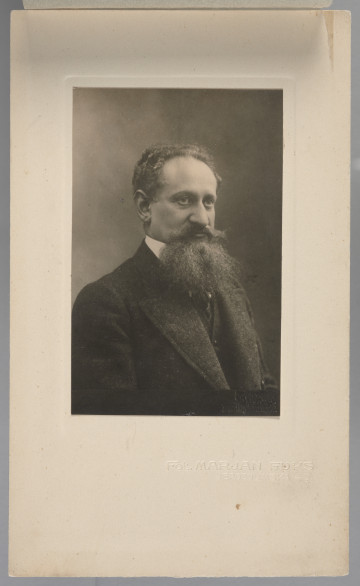
Photograph
1. ćwierć XX wieku
Museum of the history of Polish Jews
Part of the collection: European porcelain 18th/19th c.
Johann Joachim Kändler, born in 1706, was a German sculptor who became the most crucial model maker of the Meissen porcelain manufactory in Saxony and influenced the aesthetics of the wares throughout Europe. He worked at the Meissen factory for over forty years, from 1731 until he died in 1775, making large-scale statues and small figurines.
The porcelain sculptures he designed and produced under his supervision were pleasing to the eye and of good quality. He developed miniature multi-figure scenes that decorated the table at sumptuous feasts. His works are characterised by elegance and grandeur and are the most perfect expression of Rococo. The animal groups from porcelain or the figures of dancers and musicians designed by him became very popular. They were charming and captured the natural movement. The Meissen porcelain manufactory owed much to Kändler. At the age of twenty-five, he was recognised by Augustus II the Strong, appointed court sculptor and employed as a modeller in the porcelain manufactory. He designed the equestrian statue of Augustus III, which has never been realised in its planned monumental form.
Another successful large-scale realisation was a porcelain statue depicting the king from the Saxon dynasty in Polish attire. The sculpture was inspired by a painting, a representative image in Polish attire. Louis de Silvestre, the king's court painter, painted this picture in 1737. The robe was an unusual costume in Augustus's wardrobe as he usually wore fashionable clothes in the French style. The costume treatment testified to the electoral monarch's desire to please his Polish subjects.
On the recommendation of Count Henryk Brühl, the sculpture was designed in January 1740. The work lasted until autumn 1741. In the 18th century, porcelain effigies of the king were repeatedly fired until the 20th century. The Lublin porcelain portrait of the king seems to belong to those oldest works, created in the mid-18th century. It is evidenced by minor defects, cracks in the figure, which appeared during the firing. They resulted from technical difficulties, which the porcelain manufacturers of those days could not cope with, especially when dealing with large-format figures.
Magdalena Norkowska
Author / creator
Dimensions
cały obiekt: height: 49 cm, width: 75 cm
Object type
sculpture
Technique
firing
Material
porcelain
Creation time / dating
Creation / finding place
Owner
The National Museum in Lublin
Identification number
Location / status

1. ćwierć XX wieku
Museum of the history of Polish Jews

1910 — 1919
Museum of the history of Polish Jews

non post 1939
Museum of the history of Polish Jews
DISCOVER this TOPIC
Museum of King Jan III's Palace at Wilanów
DISCOVER this PATH
Educational path